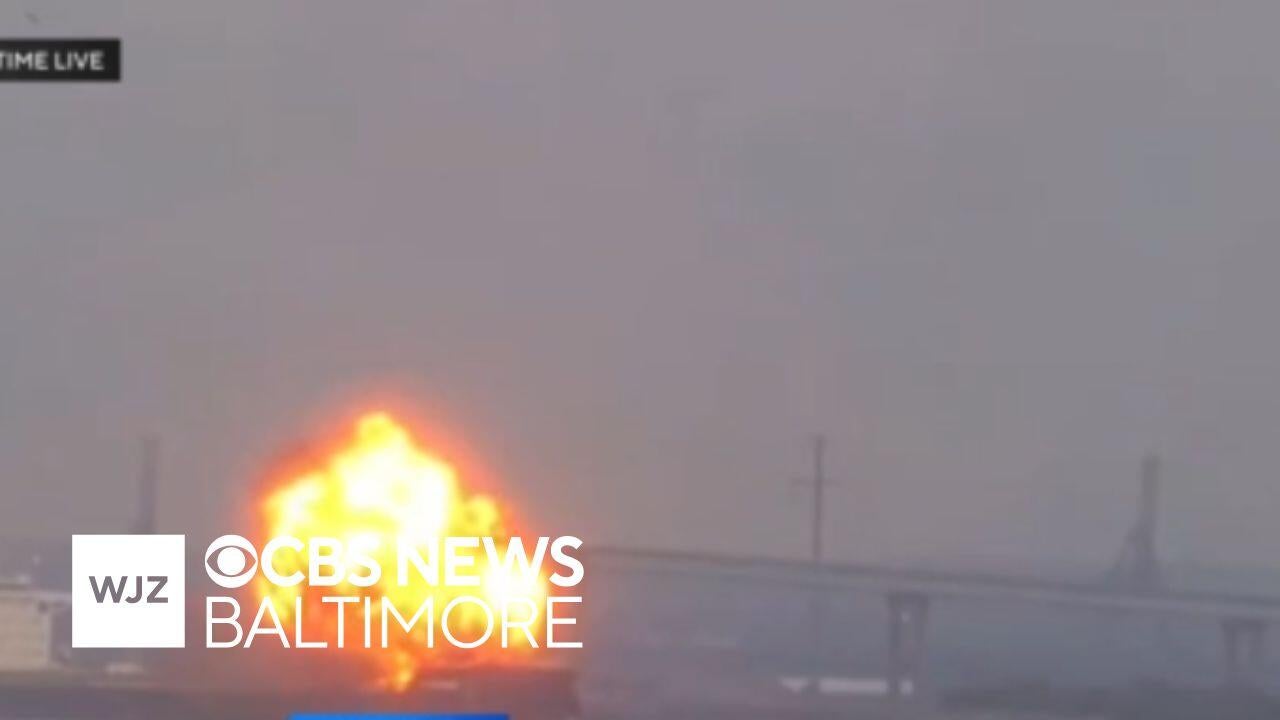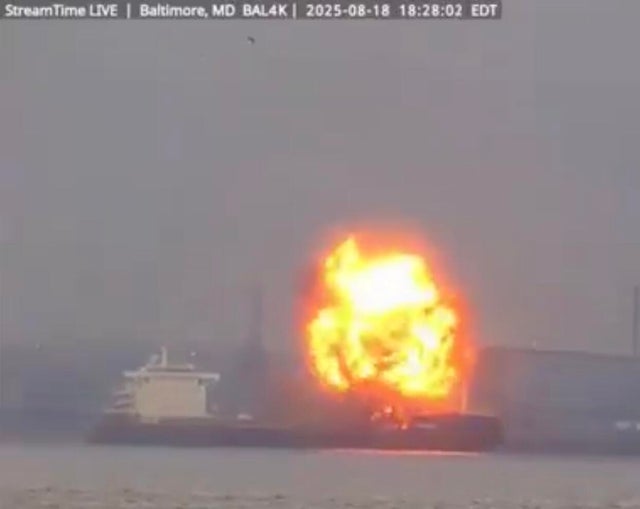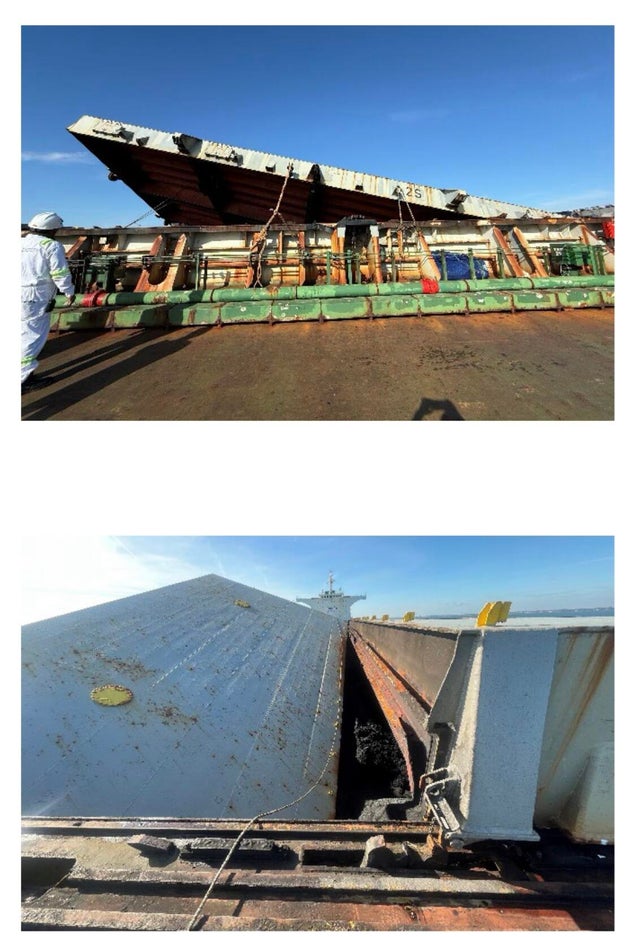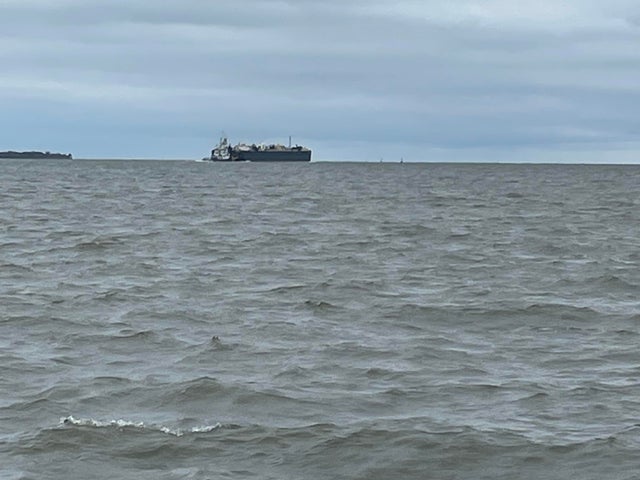Video shows ship filled with coal explode near Baltimore's Key Bridge collapse site
A camera captured the moment an explosion erupted inside the W. Sapphire, a Liberian-flagged ship filled with coal, on Monday in the Patapsco River near Baltimore's Francis Scott Key Bridge collapse site.
The emergency unfolded around 6:30 p.m. in the heart of the Fort McHenry federal channel, near the site of the former Key Bridge, which collapsed in March 2024 when it was struck by the cargo ship DALI.
The images WJZ obtained from StreamTime LIVE show the Sapphire, a 751-foot-long vessel, quickly engulfed in a fireball. You can view the explosion on StreamTime LIVE's YouTube page.
Reopening Port of Baltimore access
The U.S. Coast Guard closed marine traffic into and out of the Port of Baltimore for more than 20 hours for safety concerns.
The Coast Guard said a large hatch that was part of the Sapphire flew into the water after the explosion. They used a boat belonging to the U.S. Army Corps of Engineers that is equipped with sonar to scan the Patapsco River and make sure it was safe for navigation.
The federal channel reopened just before 4 p.m. Tuesday.
WJZ was there when the first ship sailed through within minutes of the reopening.
Sailors witness explosion
Jay Steinmetz and his son Sam had just passed the Sapphire in their sailboat when they saw and felt the explosion.
"We were just sailing. We heard a really loud explosion and turned around, and there was a 200-foot plume of smoke," Jay Steinmetz said. "We're like holy crap. And then maybe two to five minutes later, we hear 'Mayday! Mayday!'"
His son Sam said, "They evacuated boats away from the boat that was on fire."
Kyle Breeden told WJZ he heard the explosion as well.
"It was a big boom," Breeden said. "You felt it react to your body. It was crazy."
WJZ obtained the marine dispatch emergency audio.
You can hear someone on board call over the radio, "Mayday! Coal vessel Sapphire. Coal explosion. Patapsco River."
The ship had 23 crew members on board. There were also two pilots. No one was injured.
"Coast Guard, this is the Sapphire. We're taking water into hull number two. The coal ship that reported the explosion is taking water into hull number two," a pilot onboard said over the radio. "We're in the main channel of the Patapsco River. Still afloat. Still underway."
The Coast Guard is still investigating the cause.
In a statement Tuesday afternoon, the agency said they were still trying to safely make its way aboard the Sapphire.
The Sapphire was moved away from the Port of Baltimore, and as of Tuesday afternoon, it was anchored near the Chesapeake Bay Bridge.
Coal safety alert
WJZ Investigates found the U.S. Coast Guard issued a Marine Safety Alert in February about the hazards of transporting coal on ships.
They posted pictures of the Anglo Marie Louise, a U.K.-flagged ship sailing from Baltimore last year.
It was also filled with coal and experienced multiple explosions while traveling along the Virginia coast.
The Coast Guard said dangerous methane gas built up in the hull and caused those blasts.
They found the coal was not stored properly and posed an immediate threat to everyone onboard.
The Coast Guard issued the following recommendations for vessels carrying coal:
- Validate that the cargo-specific shipping declaration is complete by thoroughly addressing the properties and potential hazards of the specific type of coal being shipped as well as detailing stipulations for mitigation of these hazards.
- Review and ensure full implementation of conditions of carriage required for shipment of coal by sea as stipulated by IMSBC, the cargo-specific shipping declaration, the vessel's Safety Management System, and industry best practices.
- Communicate openly with the shipper if the cargo's behavior differs from that specified in the cargo declaration at any time during shipboard transit, at the loading facility, or during transit to the facility.
- Review contingency procedures detailing the detection of and appropriate responses to cargo-related emergencies, both onboard ships and at the loading facility.
- Exercise increased vigilance whenever interacting with coal in any capacity, both onboard ships and at the loading facility, understanding that this is a hazardous cargo that may pose an immediate danger. This includes taking strict precautions to remove or mitigate sources of ignition, including, but not limited to, electrical continuity, hot work protocols, and strict no-smoking zones.



